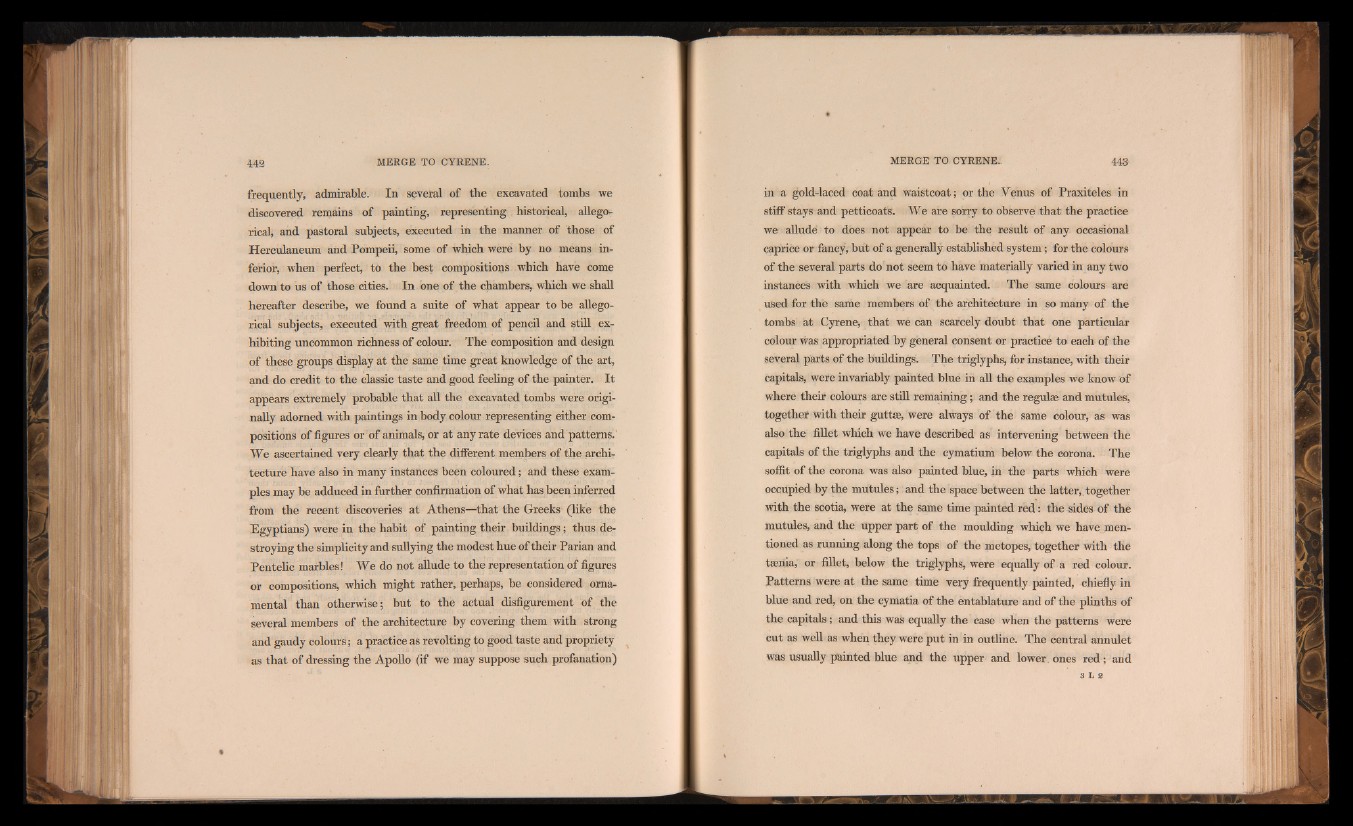
frequently, admirable. In several of the excavated tombs we
discovered remains of painting, representing historical, allegorical,
and pastoral subjects, executed in the manner of those of
Herculaneum and Pompeii, some of which were by no means inferior,
when perfect, to the best compositions which have come
down to us of those cities. In one of the chambers, which we shall
hereafter describe, we found a suite of what appear to be allegorical
subjects, executed with great freedom of pencil and still exhibiting
uncommon richness of colour. The composition and design
of these groups display at the same time great knowledge of the art,
and do credit to the classic taste and good feeling of the painter. I t
appears extremely probable that all the excavated tombs were originally
adorned with paintings in body colour representing either compositions
of figures or of animals, or at any rate devices and patterns.'
We ascertained very clearly that the different members of the architecture
have also in many instances been coloured; and these examples
may be adduced in further confirmation of what has been inferred
from the recent discoveries at Athens—that the Greeks (like the
Egyptians) were in the habit of painting their buildings ; thus destroying
the simplicity and sullying the modest hue of their Parian and
Pentelic marbles! We do not allude to the representation of figures
or compositions, which might rather, perhaps, be considered ornamental
than otherwise; but to the actual disfigurement of the
several members of the architecture by covering them with strong
and gaudy colours; a practice as revolting to good taste and propriety
as that of dressing the Apollo (if we may suppose such profanation)
in a gold-laced coat and waistcoat; or the Venus of Praxiteles in
stiff stays and petticoats. We are sorry to observe that the practice
we allude to does not appear to be the result of any occasional
caprice or fancy, but of a generally established system; for the colours
of the several parts do not seem to have materially varied in any two
instances with which we are acquainted. The same colours are
used for the same members of the architecture in so many of the
tombs at Cyrene, that we can scarcely doubt that one particular
colour was appropriated by general consent or practice to each of the
several parts of the buildings. The triglyphs, for instance, with their
capitals, were invariably painted blue in all the examples we know of
where their colours are still remaining; and the regul® and mutules,
together with their guttas, were always of the same colour, as was
also the fillet which we have described as intervening between the
capitals of the triglyphs and the cymatium below the corona. The
soffit of the corona was also painted blue, in the parts which were
occupied by the mutules; and the space between the latter,.together
with the scotia, were at the same time painted red : the sides of the
mutules, and the upper part of the moulding which we have mentioned
as running along the tops of the metopes, together with the
taenia, or fillet, below the triglyphs, were equally of a red colour.
Patterns were at the same time very frequently painted, chiefly in
blue and red, on the cymatia of the entablature and of the plinths of
the capitals; and this was equally the case when the patterns were
cut as well as when they were put in in outline. The central annulet
was usually painted blue and the upper and lower ones red ; and
3 L 2